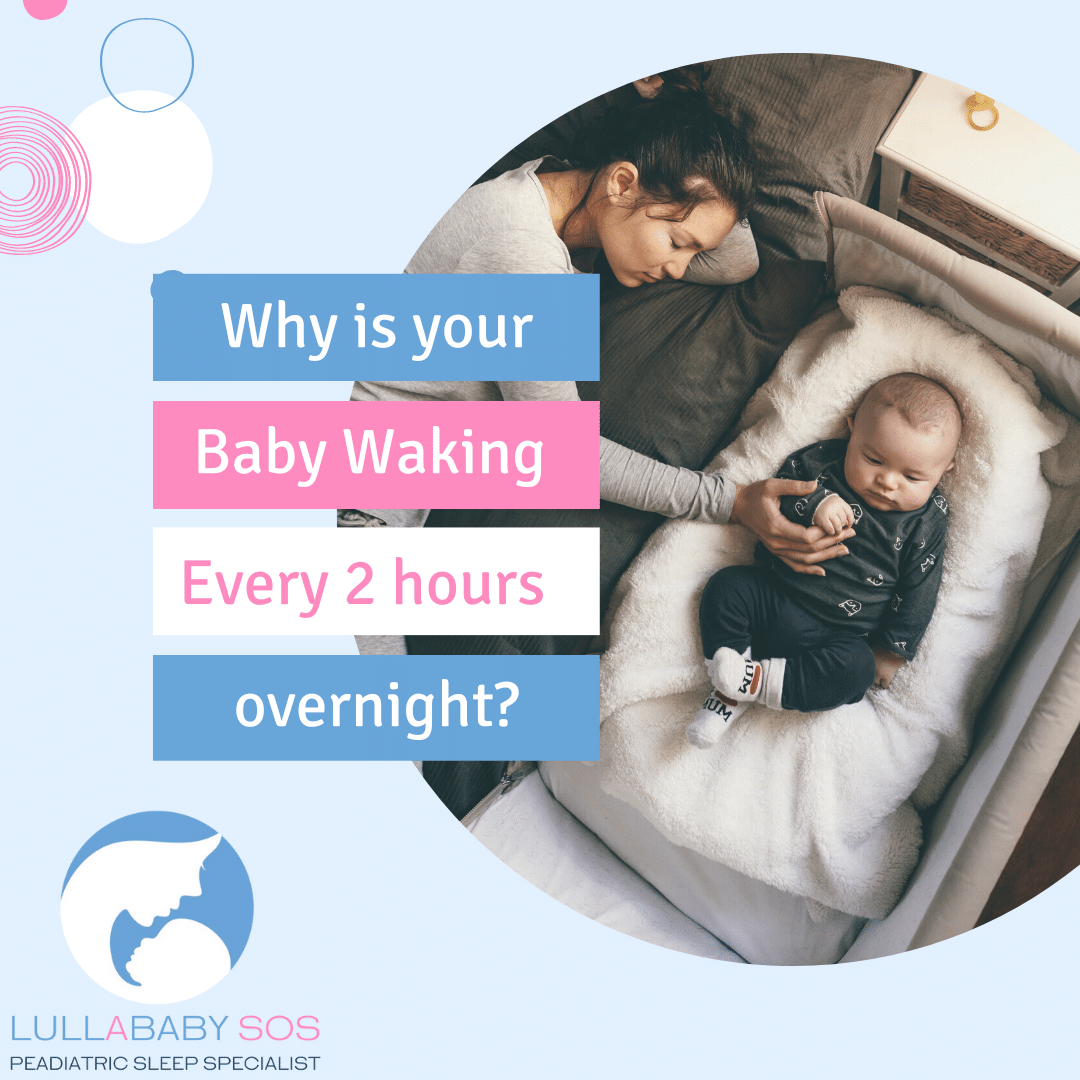Have you ever Googled "Why is my baby waking every two hours at night?"
As sleep-deprived parents, we understand the struggle of trying to establish a healthy sleep routine for your little one while also maintaining a strong attachment with them. That’s why we’re here to provide you with gentle sleep coaching techniques that prioritize your baby’s well-being and help them learn the valuable skill of self-settling for better sleep.
Understanding Sleep Cycles: A Key to Better Sleep
Before we dive into the strategies, let’s first understand sleep cycles. Sleep cycles are the different phases of sleep that we transition through during the night. For babies, there are two main types: REM (rapid eye movement) sleep and non-REM sleep (deep sleep). During REM sleep, babies’ brains are highly active, and they may exhibit movements, twitches, or even make noises. This phase of sleep is when they are more aware of their environment and external factors. Non-REM sleep, on the other hand, is a deeper and more restful sleep where the body is relaxed, and the brain is less active and less aware.
It’s important to note that babies spend much more time in REM sleep than adults and have shorter sleep cycles. This means they may wake up more often throughout the night as they transition between these different stages of sleep.
Why is your baby waking more frequently at around four months?
Around the four-month mark, babies undergo significant changes in their sleep patterns and brain development. They develop a more consistent pattern of sleep cycles and an increased awareness of their surroundings and associations with falling asleep.
Babies are constantly learning through experience. If you always cuddle, rock, feed, bounce, or drive your baby to sleep, they will come to expect the same when they wake up or transition between sleep cycles during the night. This association between external factors and sleep can lead to frequent wake-ups and difficulty in self-settling.
Understanding Your Little One’s Sleep Patterns
To better understand your baby’s sleep patterns, let’s imagine the process of falling asleep in the comfort of their mother’s arms. Feeling cozy and secure, the baby gradually drifts into a drowsy state and is gently placed in their cot. As the night progresses, babies go through different phases of sleep, starting with a longer period of deep sleep, followed by shorter sleep blocks every two hours until around 3 am. As morning approaches, they may wake up more frequently. This pattern is entirely normal for all babies.
Each time your baby wakes up, they may call out to you, and you respond by picking them up and feeding them back to sleep. Over time, this creates a strong association between feeding and sleep. The more external associations your baby has with sleep, the more habitual these associations become, leading to more frequent wake-ups and shorter periods of sleep. When babies become overly dependent on external factors to fall asleep, they find it harder to self-settle and stay asleep, leading to overtiredness and more wake-ups.
Embracing Change for Better Sleep
As the saying goes, “Nothing changes if nothing changes.” If you want to break the cycle of your baby waking every two hours at night, you need to change how you put your baby to sleep. It’s important to remember that change can be challenging, but it’s necessary for improving sleep for both you and your baby.
So, how can you teach your baby to sleep better?
- Establish an age-appropriate sleep and nutritionally balanced routine that suits both you and your baby. You can check out my downloadable guides HERE
- Develop a consistent bedtime routine that you repeat at night, for day naps, and for overnight feeds.
- Feed your baby well before bedtime, ensuring they are full but not asleep. Separating the feed from sleep with a story and bedtime routine can help break the association between feeding and sleep.
- Create a positive sleep environment by ensuring your baby’s sleeping area is dark, quiet, and at a comfortable temperature. Consider using a white noise machine to create a soothing background sound, or blockout blinds to make the room dark.
- Use your baby’s awake windows and tired cues as a guide to determine when they are ready for a good sleep.
- Support your baby through the transition by offering calm reassurance. Aim to bore them to sleep rather than patting them to sleep.
- Consider introducing a positive sleep toy that can help your baby transition to the crib.
- Be consistent in your approach. Babies learn through experience, so maintaining consistency will help them adapt to new sleep habits.
- Patience is key. While it may feel overwhelming at times, sleep problems can be solved with patience and consistency.
- For more in-depth tips and guidance, check out our blog on Ten Steps to Helping Your Little One Sleep Better.
As a Sleep Specialist for over 18 years supporting 10’s of thousands of families I want you to know that I’m not your traditional sleep coach; I’m a realistic sleep coach who understands the importance of a gentle family centred approach. I don’t recommend traditional sleep training methods that may compromise the secure attachment you have with your baby. Instead, I offer alternative techniques that prioritize your baby’s emotional well-being while promoting healthy sleep habits. Find out more about our recommended approach HERE
Ready to take the next step towards better sleep? Download our free sleep tips or get in touch with us to book a call, shoot an email, or say hi on social media. I’m here to support you on your journey to peaceful nights and restful sleep.
For more information on the services provided by Lullababy SOS, check out our page My goals to help you and your baby achieve the sleep you both deserve.
- Establish an age-appropriate sleep and nutritionally balanced routine that suits both you and your baby. You can check out my downloadable guides HERE
- Develop a consistent bedtime routine that you repeat at night, for day naps, and for overnight feeds.
- Feed your baby well before bedtime, ensuring they are full but not asleep. Separating the feed from sleep with a story and bedtime routine can help break the association between feeding and sleep.
- Create a positive sleep environment by ensuring your baby’s sleeping area is dark, quiet, and at a comfortable temperature. Consider using a white noise machine to create a soothing background sound, or blockout blinds to make the room dark.
- Use your baby’s awake windows and tired cues as a guide to determine when they are ready for a good sleep.
- Support your baby through the transition by offering calm reassurance. Aim to bore them to sleep rather than patting them to sleep.
- Consider introducing a positive sleep toy that can help your baby transition to the crib.
- Be consistent in your approach. Babies learn through experience, so maintaining consistency will help them adapt to new sleep habits.
- Patience is key. While it may feel overwhelming at times, sleep problems can be solved with patience and consistency.
- For more in-depth tips and guidance, check out our blog on Ten Steps to Helping Your Little One Sleep Better.
- Establish an age-appropriate sleep and nutritionally balanced routine that suits both you and your baby. You can check out my downloadable guides HERE
- Develop a consistent bedtime routine that you repeat at night, for day naps, and for overnight feeds.
- Feed your baby well before bedtime, ensuring they are full but not asleep. Separating the feed from sleep with a story and bedtime routine can help break the association between feeding and sleep.
- Create a positive sleep environment by ensuring your baby’s sleeping area is dark, quiet, and at a comfortable temperature. Consider using a white noise machine to create a soothing background sound, or blockout blinds to make the room dark.
- Use your baby’s awake windows and tired cues as a guide to determine when they are ready for a good sleep.
- Support your baby through the transition by offering calm reassurance. Aim to bore them to sleep rather than patting them to sleep.
- Consider introducing a positive sleep toy that can help your baby transition to the crib.
- Be consistent in your approach. Babies learn through experience, so maintaining consistency will help them adapt to new sleep habits.
- Patience is key. While it may feel overwhelming at times, sleep problems can be solved with patience and consistency.
- For more in-depth tips and guidance, check out our blog on Ten Steps to Helping Your Little One Sleep Better.



